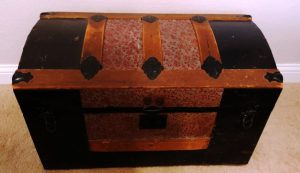 The clickety-clack of my great-grandmother’s ‘old lady shoes’[1] resonated as I toddled after her down the narrow hallway to the old trunk. There, in that back bedroom she and I would sit in the dark brilliance of polished woods, with the old trunk somehow beckoning us as if the face of some minor deity or oracle. Indeed, my great-grandmother treated the old trunk as if it held all the wonders of the world, which, in many ways, it certainly did (and still does…). Continue reading The grafting trunk
The clickety-clack of my great-grandmother’s ‘old lady shoes’[1] resonated as I toddled after her down the narrow hallway to the old trunk. There, in that back bedroom she and I would sit in the dark brilliance of polished woods, with the old trunk somehow beckoning us as if the face of some minor deity or oracle. Indeed, my great-grandmother treated the old trunk as if it held all the wonders of the world, which, in many ways, it certainly did (and still does…). Continue reading The grafting trunk
Tag Archives: Object Lessons
‘There is no try’

As a family historian, you can’t help but love the holiday season. It’s a time for reconnecting with extended family, and an excellent opportunity to share everything that you have learned about your ancestral past. With a bit of tact, you can engage your relatives in genealogical discussions, coaxing out anecdotes that flesh out your research. To that end, I have assembled a list of some of my favorite holiday genealogy dos and don’ts. Continue reading ‘There is no try’
‘To have his family around him’

As a genealogist, I have so much to give thanks for. Soon after I started my genealogical quest, I discovered that the Nantucket Historical Association had correspondence from my great-great-great-grandfather[1] in their collections. Of course I was anxious to read it and asked for copies … not knowing that there were more than eighty letters, many of them comprising multiple pages!
It took a while to accustom myself to my ancestor’s writing, since he adopted a sort of modified scripto continua, with virtually no punctuation or capital letters at the start of sentences. Much of the correspondence was dry, relating to business transactions, but there were also many droll comments and insights into the character and activities of the extended family. Continue reading ‘To have his family around him’
Fadeaway

I’ve always wanted to know more about the life of my great-grandmother Opal Young (1895–1978). To do this, I decided to see what researching her siblings might reveal about her. By and large, information about her siblings has been limited to meager ‘raw data.’ An interesting exception to this has been the life of my great-grandmother’s brother John Alfred Young (1890–1960). He is called Johnnie on the back of this Hitchcock-like cameo – it is the only known photograph to show him.[1]
Johnnie Young came to California about the time his sister Opal did in the late 1920s. Their lives as children back in Kansas seems to have been pretty normal – other than there were a LOT of people living with them in the Young household.[2] Continue reading Fadeaway
Things lost and found
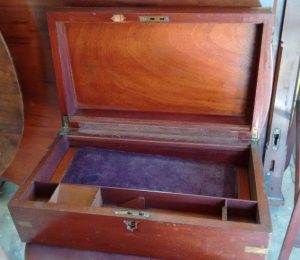 As a member of my local historic preservation commission, as well as my family’s de facto family historian and custodian of All Things Family Memorabilia, I often encounter the decision of what to preserve, what to donate or sell, and what to demolish. Historic preservation of buildings is a complex and sometimes contentious topic best left for other writers. But what about all those smaller treasures our ancestors left for us, assuming that we would value them, cherish them, and preserve them as they had (even if we don’t know what or who they are)? Continue reading Things lost and found
As a member of my local historic preservation commission, as well as my family’s de facto family historian and custodian of All Things Family Memorabilia, I often encounter the decision of what to preserve, what to donate or sell, and what to demolish. Historic preservation of buildings is a complex and sometimes contentious topic best left for other writers. But what about all those smaller treasures our ancestors left for us, assuming that we would value them, cherish them, and preserve them as they had (even if we don’t know what or who they are)? Continue reading Things lost and found
“Mother Cary”
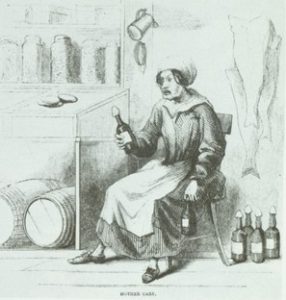
A while back, I wrote about the hotel in Marshalltown, Iowa run by my great-great-great-grandparents, which I like to fantasize might have been called “Hotel California.” The Shaws were not the only branch of my family to provide public accommodations.
After her husband[1] died in China in 1812, Betsey (Swain) Cary[2] operated a hotel called Washington House on Nantucket’s Main Street; her lodging book is in the collections of the Nantucket Historical Association, and lists guests from 1816 through 1829. On 22 August 1831, she sold Washington House to her brother-in-law, my great-great-great-great-grandfather,[3] who turned day-to-day operations over to the town sheriff, Elisha Starbuck.[4] Continue reading “Mother Cary”
Bone of my bones
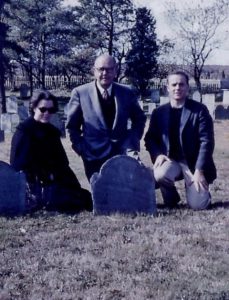
We’ve just been through Halloween, All Souls Day, and Dia de los Muertos, when society in general gives thought to skeletons, graveyards, and spirits of the departed. But whereas most folks have now packed away their plastic tombstones and ghost lights, we genealogists continue to haunt cemeteries in search of historic graves, and track down strangers whose living flesh matches that of our dead ancestors.
Long before the secrets of DNA were unlocked, humans have sensed the power in otherwise lifeless bones. Traditional Polynesian culture speaks of mana – spiritual energy – residing in bones, and relics have been treasured for centuries as a way of coming close to the holiness of Christian saints. Even elephants are known to caress the tusks and bones of their dead, somehow able to recognize the remains of elephants they’ve known in life. Continue reading Bone of my bones
Family chronicles

Recently, Jennifer Jewett Dilley of Des Moines, Iowa, reached out to the Publications office at NEHGS to discuss permissions for a project. Jennifer explained that her father Gerald Anson Jewett Jr. is “92 years young,” and that they are writing a book that chronicles Gerald’s life and the times in which he lived. It currently stands at three hundred pages and is nearing completion. Jennifer mentioned that Gerald’s great-grandfather, George Anson Jewett, was a member of NEHGS many years ago. I wrote down his name and wondered if we’d be able to uncover anything of interest on George. Continue reading Family chronicles
Things that go bump in the night
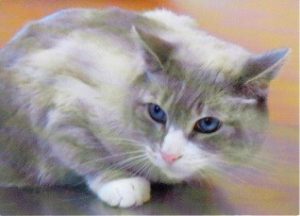
As genealogists and family history researchers, we deal with what our ancestors have left behind. But what about the ancestors who stayed behind? We all know that when we blissfully, stoically, and persistently work at finding and understanding our forebears, they will look over our shoulders, tweak our brains, and sometimes yank on our chains to get their stories told. Mine serve up apple pie and coffee!! Continue reading Things that go bump in the night
The Phippen chart

When I compiled the Early New England Families Study Project sketch on Joseph Phippen a couple of years ago, I briefly mentioned that the identification of the maiden name of his wife Dorothy/Dorcas/Darcus as “Wood” depended on an “incomplete Phippen pedigree chart attributed to Joseph, which [Clarence Almon] Torrey noted was doubted; see description of the Chart [by Robert Charles Anderson in his sketch on David Phippen] in GM2, V:455-56 [who did not incorporate information from the chart, deeming it too far removed from the early generations]).” Not having the opportunity to see the chart in question, myself, I followed Bob Anderson’s caution and did not include any maiden name for Joseph’s wife. Continue reading The Phippen chart